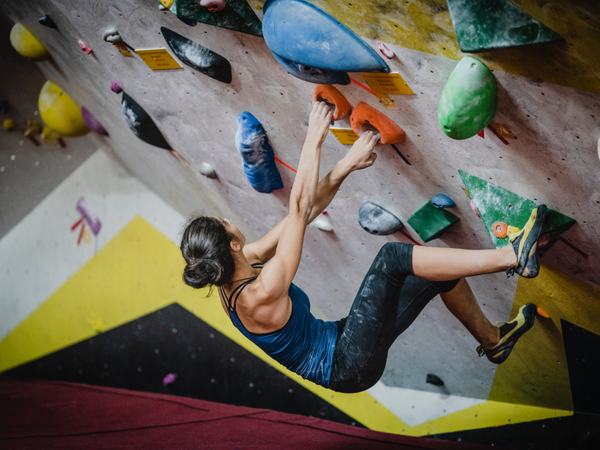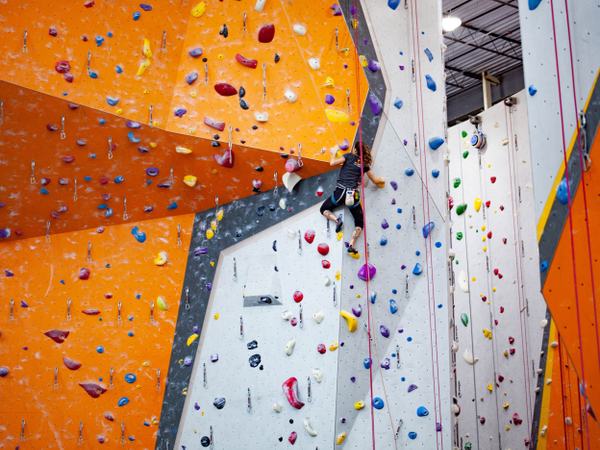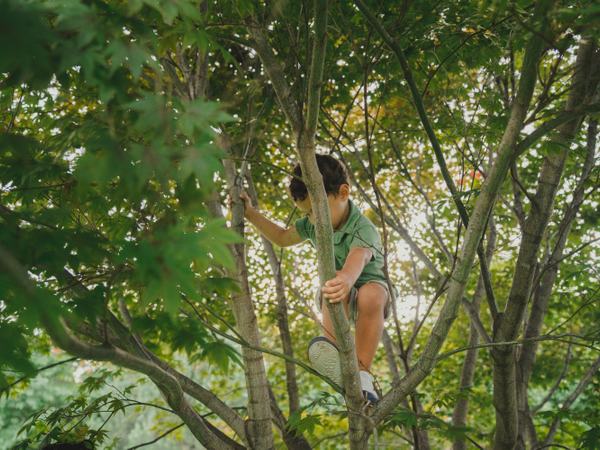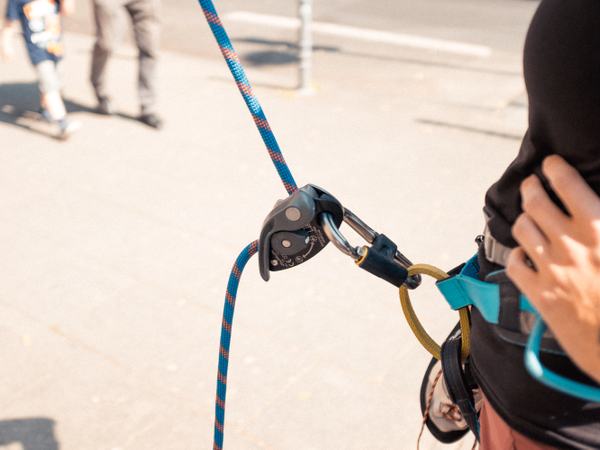This is what became of my fear
More than four years ago I had a sports accident while bouldering. I had broken my ankle and torn various ligaments. After the purely physical healing was complete, however, I realized that I had not yet healed psychologically in relation to bouldering and the accident.
I was incredibly scared. Afraid of falling again. Afraid to trust my body. And also afraid when my husband or son were bouldering. I wrote an article about this almost three years ago with my thoughts, which I called The fear has me in its grip? Fear was my biggest issue in relation to bouldering.

Today I would like to write what has become of this fear. How I learned and still learn to deal with it. What helped me and what put me under pressure.
Summary
Time heals all wounds?
I don't think this saying is true. I think that with every injury, scars remain. With every psychological injury, scars remain in the soul. And almost every physical scar matches a mental scar.
In my case, I would say that the anxiety is not gone. So not all wounds are healed in this context either. Nevertheless, the scars are paler, barely visible. The fear is no longer as present when I know my husband is bouldering. When I see my son climbing trees. I am no longer in a permanent state of tension, as I was initially after the accident.

Confrontation is the best therapy?
At this point, I want to make a brief detour to confrontation therapy and what it entails, because this is where this statement originates. Confrontation therapy or exposure therapy is a subset of behavioral therapies. The treatment method is typically used for phobias and anxiety, so would be quite appropriate here.
Its effectiveness has been proven many times in studies. So also a good point, which speaks for the fact that I should just go bouldering. Whereas simple is of course very exaggerated here. There is no question of simple. You can read more about exposure therapy in the corresponding Wikipedia article Confrontation therapy.
Once a diagnosis is made and confrontation is actually used in therapy, this is how it works: While being accompanied by the therapist, I would confront myself very specifically with fear-inducing stimuli. As a rule, I would start with a low intensity, i.e., with a stimulus that does not yet cause me to panic, but which makes me feel my fear clearly. Bit by bit the intensity would be increased to finally develop a realistic fear.
The goal is not that the fear disappears completely. Fear is quite useful. Fear is a protective reaction. However, it is important that we evaluate a situation realistically. You may know this from fear of flying. The risk of a crash or something similar is vanishingly small and yet some people are more or less afraid of flying. What also plays a role here is the restriction caused by the fear in everyday life.
If I can no longer pursue my hobbies in my everyday life, if I no longer go out of the house, then I am clearly restricted. However, if I can overcome my fear now and then, if I have to, the restriction is more noticeable in the inner tension and less visible through real avoidance behavior.
At times I avoided any contact with bouldering or climbing. I didn't go to the climbing gym for ages, preferred not to know when others did and couldn't look when my children climbed.

But little by little, I regained my confidence. I learned to distinguish between my accident and the actual risk. I was more or less forced to go bouldering three or four times after the accident. My husband had to be there, that was important to me. It really took a lot out of me. I didn't really climb very far up, but only up to a certain height.
I started with easy routes, but increased quite quickly and also looked for challenges again. I noticed that I felt nowhere near as safe as I did before the accident. That I wasn't trying out and risking as much. But I was bouldering again. That was a huge step for me.
It's no longer the passion I had before the accident, when we spent almost every weekend in the climbing gym. But in the meantime, I can be a little more relaxed about the whole thing.
Knowledge is power?
An important point, which perhaps already resonates somewhat in the confrontation, is the conscious confrontation with risk, with danger. I actually did some pretty specific research on how often accidents happen in bouldering. For this, I read the article How do accidents happen in climbing gyms from the German Alpine Club. The most important aspect is right at the beginning here: accidents while climbing or bouldering are rare.

In addition, I tried again to reconstruct the accident. This was not really easy, because I was missing parts of the memory just before the accident. Even now I still can't reconstruct it 100% how the fall happened. However, I have a pretty concrete idea of how it probably was.
I looked for articles on what to look for when bouldering and how to boulder safely. I read the interview on learning to climb on the Dextro Energy website. I also watched videos on how to boulder safely. The more articles I read and the more videos I watched, the more confidence I actually gained. I had concrete knowledge on how to avoid accidents. So in my case, knowledge is less power than safety. Knowledge gives safety.
I also shared what to look out for at the climbing gym. A climbing instructor recommended that I start belayed climbing as a way to regain confidence in my body. That sounded logical to me. At the same time, I was not motivated enough to take this step because I did not really want to get involved in climbing in such an intensive and concrete way.

Conclusion
More than four years have passed since my bouldering accident. The fear has not completely disappeared, but I have noticed how it has become less with time. What also helped me was a small-step confrontation and the targeted examination of the subject in terms of risks and sources of danger.
Currently, I can say that fear does not limit me. Bouldering is not my favorite hobby, but I'm getting back into going to the climbing gym.
No comments yet.